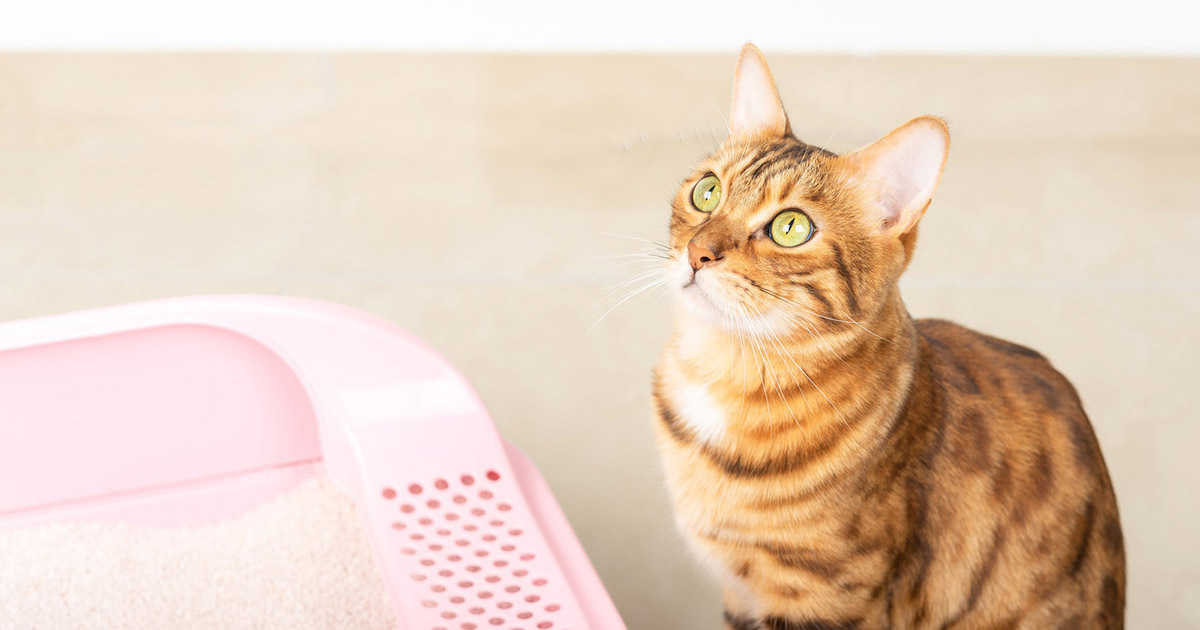Prevent Bathroom Emergencies: Don't Flush Cat Poop Down Your Toilet - Expert Guidance
Prevent Bathroom Emergencies: Don't Flush Cat Poop Down Your Toilet - Expert Guidance
Blog Article
The article author is making a number of good annotation about How to Dispose of Cat Poop and Litter Without Plastic Bags overall in this great article following next.

Intro
As feline proprietors, it's vital to be mindful of exactly how we take care of our feline buddies' waste. While it may appear hassle-free to purge feline poop down the commode, this practice can have detrimental effects for both the environment and human wellness.
Ecological Impact
Purging pet cat poop presents damaging pathogens and parasites into the water supply, posing a significant risk to aquatic communities. These pollutants can adversely impact marine life and compromise water top quality.
Wellness Risks
In addition to ecological worries, purging pet cat waste can also pose health and wellness dangers to humans. Cat feces may have Toxoplasma gondii, a parasite that can create toxoplasmosis-- a potentially severe ailment, particularly for pregnant women and individuals with weakened body immune systems.
Alternatives to Flushing
Luckily, there are safer and a lot more accountable means to throw away cat poop. Take into consideration the following choices:
1. Scoop and Dispose in Trash
The most common method of taking care of feline poop is to scoop it right into a biodegradable bag and throw it in the garbage. Make sure to use a committed clutter scoop and get rid of the waste immediately.
2. Usage Biodegradable Litter
Choose naturally degradable pet cat litter made from materials such as corn or wheat. These trashes are eco-friendly and can be safely dealt with in the trash.
3. Hide in the Yard
If you have a yard, think about burying feline waste in a marked location far from veggie yards and water sources. Make sure to dig deep sufficient to prevent contamination of groundwater.
4. Set Up a Pet Waste Disposal System
Purchase a pet dog waste disposal system particularly developed for pet cat waste. These systems make use of enzymes to break down the waste, minimizing odor and environmental effect.
Verdict
Accountable animal possession extends beyond providing food and sanctuary-- it likewise includes correct waste management. By refraining from purging cat poop down the toilet and selecting alternate disposal techniques, we can decrease our ecological impact and safeguard human health.
Why Can’t I Flush Cat Poop?
It Spreads a Parasite
Cats are frequently infected with a parasite called toxoplasma gondii. The parasite causes an infection called toxoplasmosis. It is usually harmless to cats. The parasite only uses cat poop as a host for its eggs. Otherwise, the cat’s immune system usually keeps the infection at low enough levels to maintain its own health. But it does not stop the develop of eggs. These eggs are tiny and surprisingly tough. They may survive for a year before they begin to grow. But that’s the problem.
Our wastewater system is not designed to deal with toxoplasmosis eggs. Instead, most eggs will flush from your toilet into sewers and wastewater management plants. After the sewage is treated for many other harmful things in it, it is typically released into local rivers, lakes, or oceans. Here, the toxoplasmosis eggs can find new hosts, including starfish, crabs, otters, and many other wildlife. For many, this is a significant risk to their health. Toxoplasmosis can also end up infecting water sources that are important for agriculture, which means our deer, pigs, and sheep can get infected too.
Is There Risk to Humans?
There can be a risk to human life from flushing cat poop down the toilet. If you do so, the parasites from your cat’s poop can end up in shellfish, game animals, or livestock. If this meat is then served raw or undercooked, the people who eat it can get sick.
In fact, according to the CDC, 40 million people in the United States are infected with toxoplasma gondii. They get it from exposure to infected seafood, or from some kind of cat poop contamination, like drinking from a stream that is contaminated or touching anything that has come into contact with cat poop. That includes just cleaning a cat litter box.
Most people who get infected with these parasites will not develop any symptoms. However, for pregnant women or for those with compromised immune systems, the parasite can cause severe health problems.
How to Handle Cat Poop
The best way to handle cat poop is actually to clean the box more often. The eggs that the parasite sheds will not become active until one to five days after the cat poops. That means that if you clean daily, you’re much less likely to come into direct contact with infectious eggs.
That said, always dispose of cat poop in the garbage and not down the toilet. Wash your hands before and after you clean the litter box, and bring the bag of poop right outside to your garbage bins.
https://trenchlesssolutionsusa.com/why-cant-i-flush-cat-poop/

As a devoted person who reads on Don’t flush cat feces down the toilet, I imagined sharing that piece of content was really useful. Enjoyed our posting? Please share it. Help someone else check it out. Thanks for taking the time to read it.
Visit Report this page